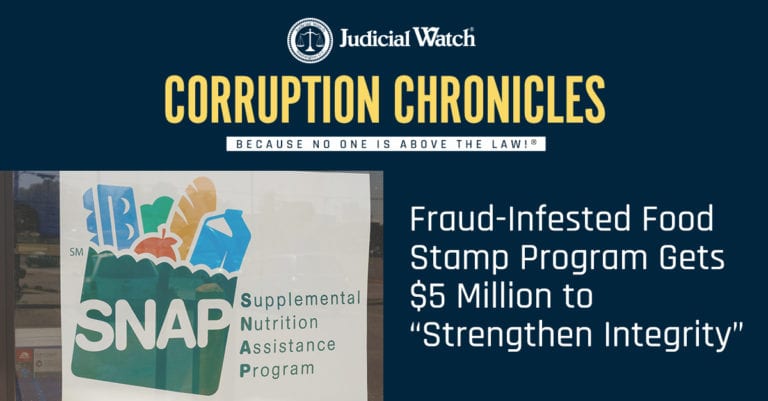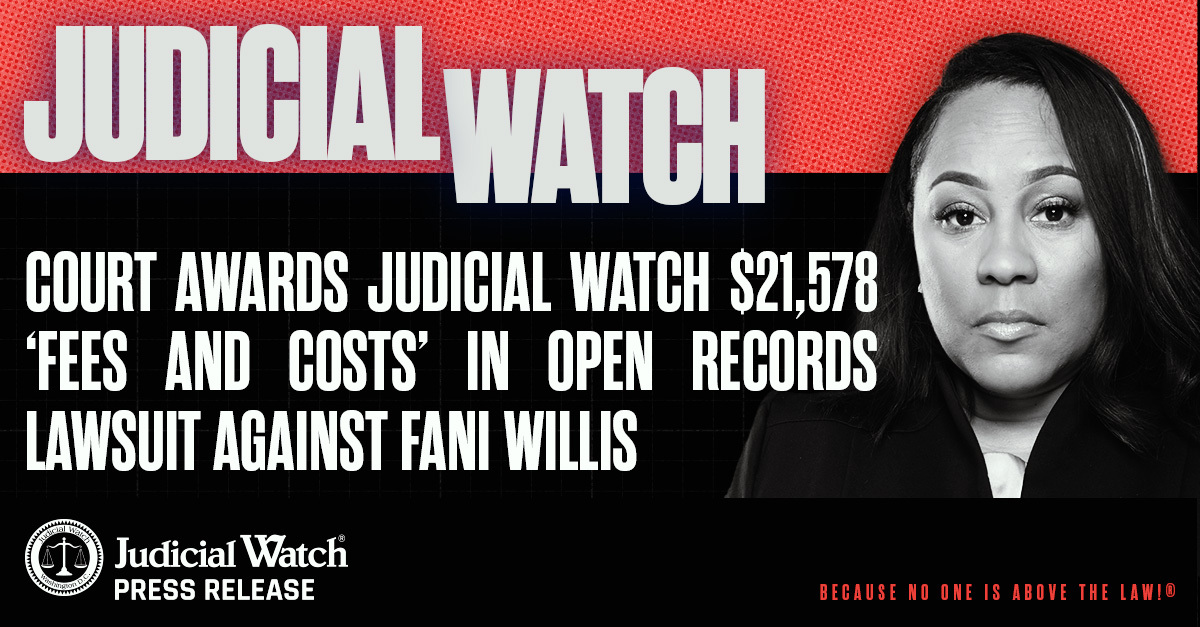

Fraud-Infested Food Stamp Program Gets $5 Million to “Strengthen Integrity”


Fraud is so rampant in the nation’s taxpayer-funded food stamp program that the government is spending more than $5 million to help curb it. Judicial Watch has long reported on the pervasive corruption in the multi-billion-dollar welfare plan that provides free food for tens of millions of poor people nationwide, but it seems to have reached a new high. The government’s answer is to spend even more taxpayer dollars to correct the problem. The money will be used to strengthen integrity activities by improving and expanding recipient fraud prevention in the costly food stamp endeavor, which was renamed Supplemental Nutrition Assistance Program (SNAP) by the Obama administration to eliminate the welfare stigma. The multi-million-dollar initiative will be known as SNAP Fraud Framework.
Like most bloated government initiatives, SNAP has long been plagued by waste. It is the country’s largest domestic food assistance enterprise and serves around 40 million low-income residents at a cost of more than $60 billion annually, according to figures released by the U.S. Department of Agriculture (USDA). Under Obama an unprecedented number of individuals received food stamps, shattering records in the six-decade-old welfare venture during the administration’s two terms. In several of the Obama years the USDA spent an eye-popping $80 billion to provide free groceries and during most of its tenure the administration dedicated well over $70 billion annually, the USDA figures show. At the height, in 2013, the agency spent $80 billion to give 48 million free groceries. The remarkable growth was part of Obama’s mission to eradicate “food insecure households” and his administration spent millions of dollars on ad campaigns to recruit more food stamp recipients, even doling out hefty cash rewards to local governments that signed up the most beneficiaries. One state even bragged about a $5 million performance bonus it got from the feds for its “swift processing of applications.”
In the years that followed, the fraud grew immensely with the alarming numbers well documented by the government. Last year the USDA released figures disclosing about $1.1 billion in food stamp fraud annually. Nearly 12% of retailers authorized by the government to accept food stamps engage in illegal practices, according to the agency. A few years ago, nearly 200 people were arrested in Florida for operating a sophisticated ring in which 22,000 fraudulent food stamp transactions totaling $3.7 million were recorded by a task force of local and federal authorities. In 2016 the feds busted the largest food stamp fraud operation in history, a $13 million scheme run by flea market retailers in the largely black and Hispanic areas of south Florida’s Miami-Dade County known as Opa-Locka and Hialeah.
In 2018 a federal audit revealed that “retailer trafficking” swindles the government out of more than a billion dollars a year while the USDA sits by. The agency assumes that 90% of the benefits redeemed in small stores and 40% in large stores were trafficked, according to the audit, which was conducted by the investigative arm of Congress. As if the widespread fraud were not bad enough, the USDA allows it to occur even though a 2008 law armed the agency with the authority to strengthen penalties for retailers caught trafficking. A USDA division called Food and Nutrition Services (FNS) is responsible for rooting out the type of fraud and corruption that continue plaguing the food stamp program. “As of November 2018, FNS had not implemented this authority,” according to congressional investigators. “By failing to take timely action to strengthen penalties, FNS has not taken full advantage of an important tool for deterring trafficking.”
Thankfully, the Trump administration is finally taking action to address some of the problems. Last summer the administration announced changes after revealing that more than 3 million people are improperly receiving benefits. Under the plan, a loophole that allows states to approve food stamp benefits without checking on recipients’ assets will finally be eliminated. This is known as “expanded categorical eligibility” or “broad based categorical eligibility.” The new rule could save American taxpayers and estimated $2.5 billion annually. Additionally, law enforcement agents are increasingly using data from electronic food stamp transactions to identify and eliminate fraud. The multi-million-dollar fraud framework will have seven components that include organizational management, recipient integrity education and data management.















